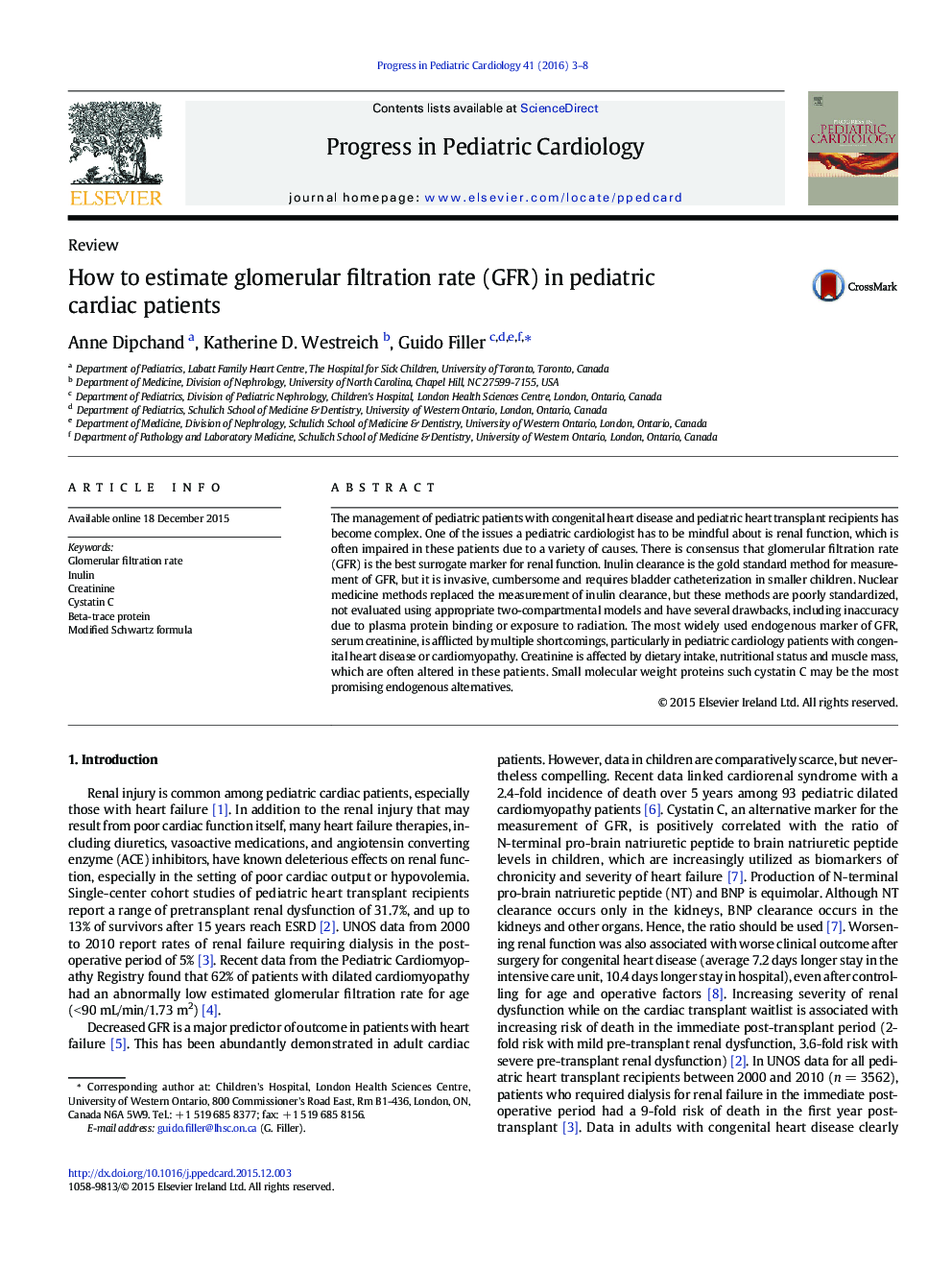| کد مقاله | کد نشریه | سال انتشار | مقاله انگلیسی | نسخه تمام متن |
|---|---|---|---|---|
| 3007267 | 1578932 | 2016 | 6 صفحه PDF | دانلود رایگان |
The management of pediatric patients with congenital heart disease and pediatric heart transplant recipients has become complex. One of the issues a pediatric cardiologist has to be mindful about is renal function, which is often impaired in these patients due to a variety of causes. There is consensus that glomerular filtration rate (GFR) is the best surrogate marker for renal function. Inulin clearance is the gold standard method for measurement of GFR, but it is invasive, cumbersome and requires bladder catheterization in smaller children. Nuclear medicine methods replaced the measurement of inulin clearance, but these methods are poorly standardized, not evaluated using appropriate two-compartmental models and have several drawbacks, including inaccuracy due to plasma protein binding or exposure to radiation. The most widely used endogenous marker of GFR, serum creatinine, is afflicted by multiple shortcomings, particularly in pediatric cardiology patients with congenital heart disease or cardiomyopathy. Creatinine is affected by dietary intake, nutritional status and muscle mass, which are often altered in these patients. Small molecular weight proteins such cystatin C may be the most promising endogenous alternatives.
Journal: Progress in Pediatric Cardiology - Volume 41, June 2016, Pages 3–8
